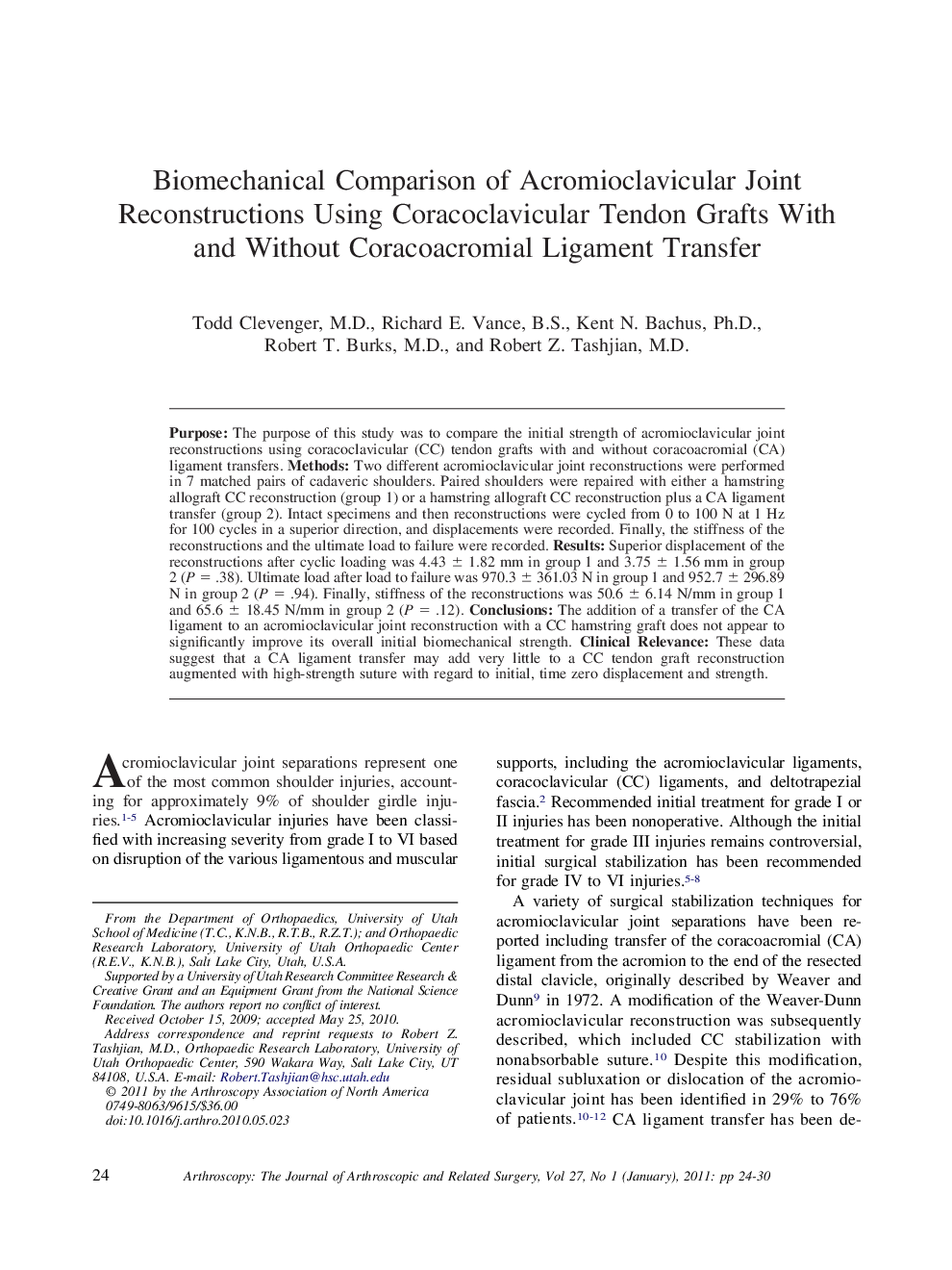| Article ID | Journal | Published Year | Pages | File Type |
|---|---|---|---|---|
| 4045761 | Arthroscopy: The Journal of Arthroscopic & Related Surgery | 2011 | 7 Pages |
PurposeThe purpose of this study was to compare the initial strength of acromioclavicular joint reconstructions using coracoclavicular (CC) tendon grafts with and without coracoacromial (CA) ligament transfers.MethodsTwo different acromioclavicular joint reconstructions were performed in 7 matched pairs of cadaveric shoulders. Paired shoulders were repaired with either a hamstring allograft CC reconstruction (group 1) or a hamstring allograft CC reconstruction plus a CA ligament transfer (group 2). Intact specimens and then reconstructions were cycled from 0 to 100 N at 1 Hz for 100 cycles in a superior direction, and displacements were recorded. Finally, the stiffness of the reconstructions and the ultimate load to failure were recorded.ResultsSuperior displacement of the reconstructions after cyclic loading was 4.43 ± 1.82 mm in group 1 and 3.75 ± 1.56 mm in group 2 (P = .38). Ultimate load after load to failure was 970.3 ± 361.03 N in group 1 and 952.7 ± 296.89 N in group 2 (P = .94). Finally, stiffness of the reconstructions was 50.6 ± 6.14 N/mm in group 1 and 65.6 ± 18.45 N/mm in group 2 (P = .12).ConclusionsThe addition of a transfer of the CA ligament to an acromioclavicular joint reconstruction with a CC hamstring graft does not appear to significantly improve its overall initial biomechanical strength.Clinical RelevanceThese data suggest that a CA ligament transfer may add very little to a CC tendon graft reconstruction augmented with high-strength suture with regard to initial, time zero displacement and strength.
